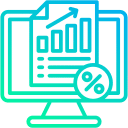Integrating Salesforce with Learning Management Systems (LMS) is no longer just a technical upgrade—it’s a strategic move that transforms training from a cost center into a profit center. By linking customer and sales data with learning insights, businesses can unlock new efficiencies, drive revenue, and empower teams to excel. In this comprehensive guide, we explore how integrating Salesforce with your LMS, such as Paradiso LMS, can supercharge your training initiatives while embracing emerging trends that are reshaping the world of corporate learning.

The Essential Guide to Salesforce LMS Integration
The Power of Salesforce LMS Integration
Salesforce is renowned for its cloud-based CRM capabilities, offering deep insights into customer interactions and sales performance. When this power is merged with an LMS, companies can streamline learning processes and automate training workflows—much like having a digital assistant that anticipates training needs and delivers content at the right moment.
Why Integrate Salesforce with Your LMS?
Unified Data Ecosystem:
Integrating Salesforce with an LMS creates a single source of truth. Training progress, customer interactions, and sales performance all live under one roof, ensuring that insights are accessible and actionable across your organization.
Automated Workflows and Enrollment:
Imagine a new hire automatically enrolled in role-specific training as soon as they join your Salesforce environment. This seamless automation reduces manual tasks, minimizes errors, and accelerates onboarding.
Enhanced Reporting and Analytics:
Real-time dashboards track training completion rates, performance metrics, and ROI. Sales and training teams can use this data to refine strategies, ensuring that learning initiatives directly contribute to business success.
Stronger Alignment Between Sales and Training:
When training data is synced with customer interactions, sales teams can gain insights into which training modules boost performance. This alignment creates a cohesive environment where every department contributes to overarching business goals.
Emerging Trends in Salesforce LMS Integration
As technology evolves, so do the opportunities to enhance your training platform. Here are some of the latest trends driving innovation in Salesforce LMS integration :
AI-Driven Learning and Personalization
Artificial intelligence is transforming how training content is delivered and personalized:
- Smart Content Recommendations:
AI algorithms analyze learner behavior and sales trends to recommend tailored courses, much like how streaming platforms suggest your next favorite show. This personalization boosts engagement and accelerates skill development. - Predictive Analytics:
By forecasting skill gaps and training needs before they become critical, predictive analytics empower your organization to stay ahead of the curve. This proactive approach not only improves performance but also enhances ROI by ensuring targeted investments in learning.
Microlearning and Just-in-Time Training
The modern workforce needs concise, on-demand training modules:
- Bite-Sized Content:
Integrate microlearning modules within Salesforce, enabling your team to access quick, impactful lessons that fit into even the busiest schedules. This method is particularly effective in reinforcing knowledge retention. - On-Demand Learning:
Whether in the office or on the move, employees can tap into mobile-friendly content that delivers training exactly when it is needed, ensuring continuous learning and real-time application of new skills.
Virtual Reality (VR) and Immersive Learning Experiences
Emerging technologies like VR are reshaping how training is experienced:
- Immersive Simulations:
Use VR to create realistic training scenarios that mirror real-world challenges. These immersive experiences enhance engagement, retention, and practical application, making them ideal for high-stakes training environments. - Enhanced Collaboration:
Virtual environments can facilitate collaborative learning sessions, bringing together teams from across the globe. These interactive settings foster teamwork and accelerate problem-solving in real time.
Cloud-Native and Mobile-First Design
The modern workforce is always on the move, and training solutions must keep pace:
- Seamless Mobile Access:
With cloud-native solutions like Paradiso LMS, learners can access training materials from any device. This flexibility means that learning is not confined to a desktop, encouraging continuous engagement. - Real-Time Updates:
Cloud integration ensures that both Salesforce and your LMS reflect the latest data, enabling agile updates to training programs as business needs evolve.
Best Practices for a Successful Integration
Integrating Salesforce with your LMS requires a clear strategy and thoughtful planning. Here’s how to get it right:
1. Define Clear Objectives and KPIs
Establish your training goals and key performance indicators (KPIs) before integration. Are you aiming to reduce onboarding time, boost sales performance, or improve customer engagement? Clear objectives will guide your integration strategy and ensure it aligns with broader business goals.
2. Choose the Right LMS Platform
Select an LMS that not only meets your current business requirements but is also scalable for future growth. Paradiso LMS, for example, offers robust features, flexible integration options, and a mobile-first design that make it a standout choice for businesses ready to embrace digital transformation.
3. Customize and Tailor Your Learning Experience
Customize your LMS to address the specific needs of your sales and training teams. Design an intuitive user interface, build custom plugins, and structure courses to ensure the learning experience is engaging and effective. Personalization enhances both learner engagement and overall training success.
4. Leverage the Salesforce API for Seamless Integration
Utilize the powerful Salesforce API to connect your LMS with your CRM system. This connection automates processes like user enrollment, data synchronization, and certification tracking, ensuring that your training programs operate smoothly and efficiently.
5. Test Rigorously and Launch Strategically
Before going live, conduct comprehensive testing, including user acceptance testing (UAT) and performance assessments. This stage is critical to ensure that every aspect of the integration works as intended and meets the needs of your learners.
6. Monitor, Optimize, and Innovate Continuously
Post-launch, continuously monitor system performance and learner engagement. Use real-time analytics to identify areas for improvement and be agile in adopting new technologies such as AI-driven insights or VR-enhanced training. Regular updates ensure your learning platform remains at the cutting edge of corporate training.
Real-World Success: Case Studies and ROI Metrics
Transforming Training at Leading Organizations
Companies that have integrated Salesforce with their LMS have reported significant improvements in efficiency and performance. For instance, a global tech firm integrated Salesforce with their LMS and observed:
- 30% Reduction in Onboarding Time:
New hires were seamlessly enrolled in training modules, accelerating their time to productivity. - 25% Increase in Sales Performance:
Sales teams benefitted from personalized learning paths that directly aligned with customer data, leading to more effective sales strategies. - Enhanced Compliance:
Automated tracking of certification and compliance training reduced regulatory risks and ensured up-to-date employee credentials.
Measuring the Impact
Organizations are increasingly using data-driven metrics to justify their investment in Salesforce LMS integration. Key metrics include:
- Training Completion Rates:
A direct correlation between integrated learning platforms and improved completion rates. - Employee Engagement Scores:
Personalized learning experiences lead to higher engagement and retention, a critical component for long-term business success. - ROI on Learning Investments:
With automated workflows reducing administrative overhead, companies are seeing measurable returns on their training investments, making LMS integration not just a cost-effective solution but a revenue-driving one.
How Paradiso LMS Leads the Way
Paradiso LMS stands out in the competitive landscape of learning management systems with its comprehensive, forward-thinking features:
Seamless Salesforce Integration:
Paradiso LMS offers out-of-the-box integrations with Salesforce, ensuring that your CRM and training data are always in sync.
User-Centric Design:
With an emphasis on intuitive interfaces and mobile-first access, Paradiso LMS ensures that learning is accessible anytime, anywhere.
Scalable and Customizable Solutions:
Whether you’re a small business or a multinational enterprise, Paradiso LMS can scale to meet your needs while offering custom solutions to fit unique business requirements.
Cutting-Edge Features:
From AI-driven content recommendations to immersive VR training modules, Paradiso LMS is at the forefront of innovation in corporate training.
Conclusion: Transform Your Business with Innovative Learning Solutions
Integrating Salesforce with your LMS is not just a technical upgrade—it’s a strategic investment in the future of your organization. By unifying data, automating workflows, and embracing new trends like AI, VR, and microlearning, you can create a dynamic training ecosystem that drives performance and fuels growth.
Paradiso LMS exemplifies innovation in the learning space by offering seamless Salesforce integration and cutting-edge features designed to empower your workforce. Ready to revolutionize your training programs and unlock new levels of efficiency?
Take a free demo at Paradiso LMS today and experience firsthand how integrated learning can transform your business.
Embrace the digital transformation in learning and development—it’s time to empower your team, optimize your training processes, and drive success in today’s competitive landscape.













